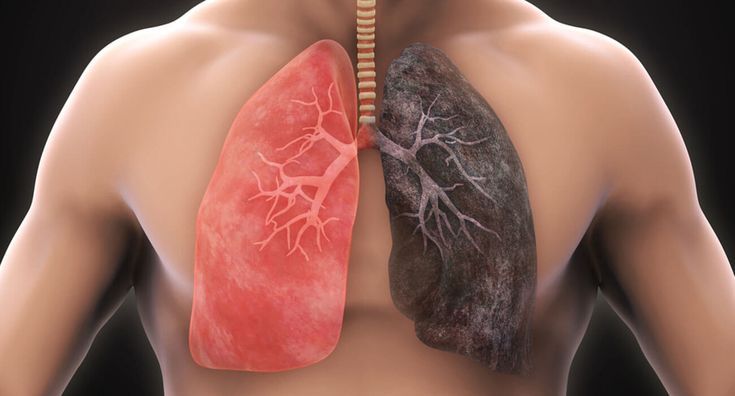.

Table of Contents
- Introduction
- What is Hypertension?
- Classification of Hypertension
- Causes and Risk Factors
- Symptoms and Signs
- Complications of Hypertension
- Diagnosis of Hypertension
- Hypertension in Different Populations
- Hypertension and Lifestyle
- Medical Management of Hypertension
- Non-Pharmacological Interventions
- Hypertension and Mental Health
- Global Epidemiology of Hypertension
- Public Health and Hypertension
- Preventive Measures
- Hypertension in Children and Adolescents
- Emerging Research and Future Directions
- Myths and Facts About Hypertension
- Case Studies and Personal Stories
- Conclusion
Introduction
Hypertension, or high blood pressure, is one of the most common and persistent medical conditions affecting billions globally. Dubbed the “silent killer,” hypertension often goes unnoticed until severe complications emerge, such as stroke, heart attack, or kidney failure. This blog aims to unravel the many layers of hypertension, providing a 360-degree view of this global health issue.
What is Hypertension?
Hypertension is a condition where the force of the blood against the artery walls is consistently too high. Blood pressure is measured in millimeters of mercury (mm Hg) and recorded as two numbers:
- Systolic Pressure: The pressure when the heart beats
- Diastolic Pressure: The pressure when the heart rests
Normal Blood Pressure:
- Systolic: Less than 120 mm Hg
- Diastolic: Less than 80 mm Hg
Hypertension is defined as:
- Stage 1 Hypertension: 130–139/80–89 mm Hg
- Stage 2 Hypertension: 140/90 mm Hg or higher
- Hypertensive Crisis: 180/120 mm Hg or higher (emergency care needed)
Classification of Hypertension
1. Primary (Essential) Hypertension
- No identifiable cause
- Develops gradually over many years
- Accounts for 90-95% of adult hypertension cases
2. Secondary Hypertension
- Caused by an underlying condition
- Tends to appear suddenly and causes higher blood pressure than primary hypertension
- Causes include:
- Kidney disease
- Adrenal tumors
- Thyroid problems
- Congenital blood vessel defects
- Certain medications
Causes and Risk Factors
Non-modifiable Risk Factors
- Age: Risk increases with age
- Genetics: Family history of hypertension
- Ethnicity: More common in people of African descent
Modifiable Risk Factors
- Obesity
- Poor diet (especially high in sodium)
- Lack of physical activity
- Alcohol and tobacco use
- Stress
- Chronic conditions like diabetes or sleep apnea
Symptoms and Signs
Often called the silent killer because it rarely causes symptoms until it’s too late. When symptoms do appear, they may include:
- Headaches
- Shortness of breath
- Nosebleeds
- Chest pain
- Visual changes
- Dizziness
Complications of Hypertension
1. Cardiovascular Complications
- Heart attack
- Heart failure
- Aneurysm
2. Cerebrovascular Complications
- Stroke
- Cognitive decline
- Dementia
3. Renal Complications
- Chronic kidney disease
- Kidney failure
4. Ocular Complications
- Hypertensive retinopathy
- Vision loss
Diagnosis of Hypertension
1. Blood Pressure Measurement
- Using sphygmomanometers (manual or digital)
- Repeated readings on different days for accuracy
2. Ambulatory Blood Pressure Monitoring
- 24-hour monitoring during daily activities
3. Home Blood Pressure Monitoring
- Helps rule out white-coat hypertension
4. Additional Tests
- Blood tests (cholesterol, glucose, kidney function)
- Urinalysis
- ECG or Echocardiogram
- Eye exam for hypertensive retinopathy
Hypertension in Different Populations
1. Hypertension in the Elderly
- More susceptible due to arterial stiffness
- Often isolated systolic hypertension
2. Hypertension in Women
- May increase during pregnancy (preeclampsia)
- Affected by menopause
3. Hypertension in African Populations
- Higher prevalence
- More severe organ damage
4. Hypertension in Children and Teens
- Rising due to obesity and inactivity
- Requires specialized diagnosis and treatment
Hypertension and Lifestyle
1. Diet
- DASH diet (Dietary Approaches to Stop Hypertension)
- Reduce salt intake
- Increase fruits, vegetables, and whole grains
2. Physical Activity
- At least 150 minutes of moderate-intensity exercise weekly
- Aerobic activities (walking, swimming, cycling)
3. Weight Control
- Losing 5–10% of body weight can lower blood pressure significantly
4. Smoking and Alcohol
- Avoid tobacco entirely
- Limit alcohol to moderate levels
5. Stress Management
- Mindfulness, meditation, yoga, cognitive behavioral therapy
Medical Management of Hypertension
1. First-Line Medications
- Thiazide Diuretics
- ACE Inhibitors
- Angiotensin II Receptor Blockers (ARBs)
- Calcium Channel Blockers
2. Second-Line Medications
- Beta-Blockers
- Alpha-Blockers
- Central Agonists
- Vasodilators
3. Combination Therapy
- More effective in resistant hypertension
- Fixed-dose combinations improve adherence
4. Monitoring and Adherence
- Regular follow-ups
- Home monitoring
- Patient education
Non-Pharmacological Interventions
- Lifestyle modification programs
- Community health education
- Digital health tools like apps and BP monitors
- Cognitive Behavioral Therapy (CBT)
- Herbal interventions (with caution)
Hypertension and Mental Health
- Anxiety and depression may worsen hypertension
- Chronic stress increases sympathetic nervous activity
- Mental health screening should be part of hypertension care
- Emotional well-being improves treatment adherence
Global Epidemiology of Hypertension
Global Statistics
- Over 1.3 billion people worldwide suffer from hypertension
- Leading risk factor for premature death globally
- Prevalence varies:
- Africa: ~46%
- Americas: ~35%
- Europe: ~40%
WHO Initiatives
- Global HEARTS initiative
- Million Hearts Campaign
- Universal Health Coverage push
Public Health and Hypertension
Burden on Health Systems
- Increased hospital admissions
- Higher medication costs
- Long-term care for stroke and kidney failure
Strategies for Control
- Population-wide salt reduction
- Health education campaigns
- Task-shifting to trained community health workers
- Regular community screenings
Preventive Measures
- Primary Prevention:
- Healthy diet, exercise, avoiding tobacco and alcohol
- Secondary Prevention:
- Early diagnosis and medication
- Tertiary Prevention:
- Preventing complications like stroke or heart attack
Hypertension in Children and Adolescents
Causes
- Obesity
- Kidney disease
- Hormonal disorders
Diagnosis
- Age-, sex-, and height-specific BP percentiles
Management
- Weight loss
- Physical activity
- Pediatric antihypertensives if needed
Emerging Research and Future Directions
1. Genetics and Precision Medicine
- Identification of hypertension-related genes
- Pharmacogenomics in choosing medications
2. Telemedicine
- Digital platforms for remote monitoring
3. AI in Hypertension Care
- Predictive models for early detection
4. New Drug Targets
- Endothelin receptor antagonists
- Renin inhibitors
Myths and Facts About Hypertension
- Myth: Hypertension always causes symptoms
Fact: It can be silent for years - Myth: Only the elderly get hypertension
Fact: It can affect all ages - Myth: If your BP is normal on meds, you’re cured
Fact: You need lifelong management - Myth: Salt substitutes are always safe
Fact: Some contain potassium which can be harmful in kidney disease
Case Studies and Personal Stories
1. Samuel, 45 – Survived a Stroke
Ignored high BP warnings, suffered a stroke, recovered with lifestyle changes and rehab.
2. Amina, 32 – Gestational Hypertension
Diagnosed during pregnancy, now monitors BP regularly and follows DASH diet.
3. Peter, 60 – Chronic Kidney Disease
Poor BP control led to kidney damage; now on dialysis and advocating awareness.
Conclusion
Hypertension is a global epidemic that silently claims millions of lives each year. It is preventable, manageable, and, with proper education and healthcare infrastructure, largely controllable. Every stakeholder—governments, health professionals, communities, and individuals—has a role to play in combating this silent killer.
Prevention remains the best cure. With continued research, global collaboration, and public education, we can take monumental steps toward a world where hypertension is no longer a silent threat.

